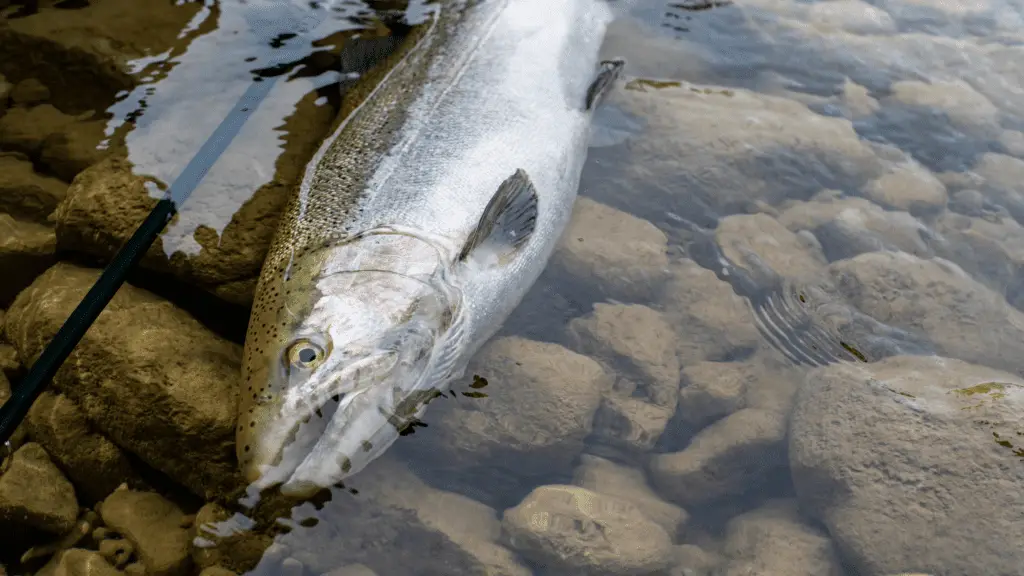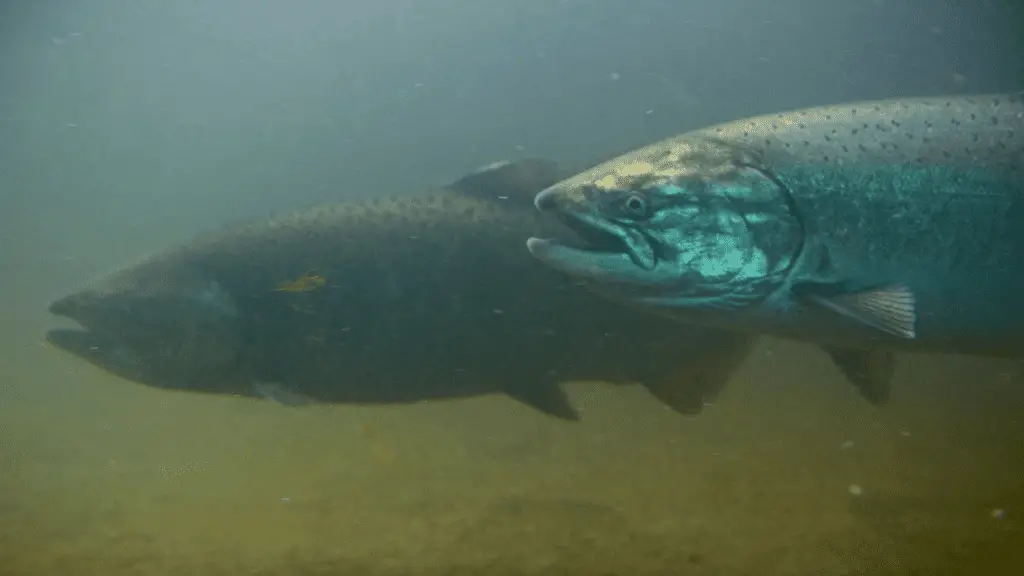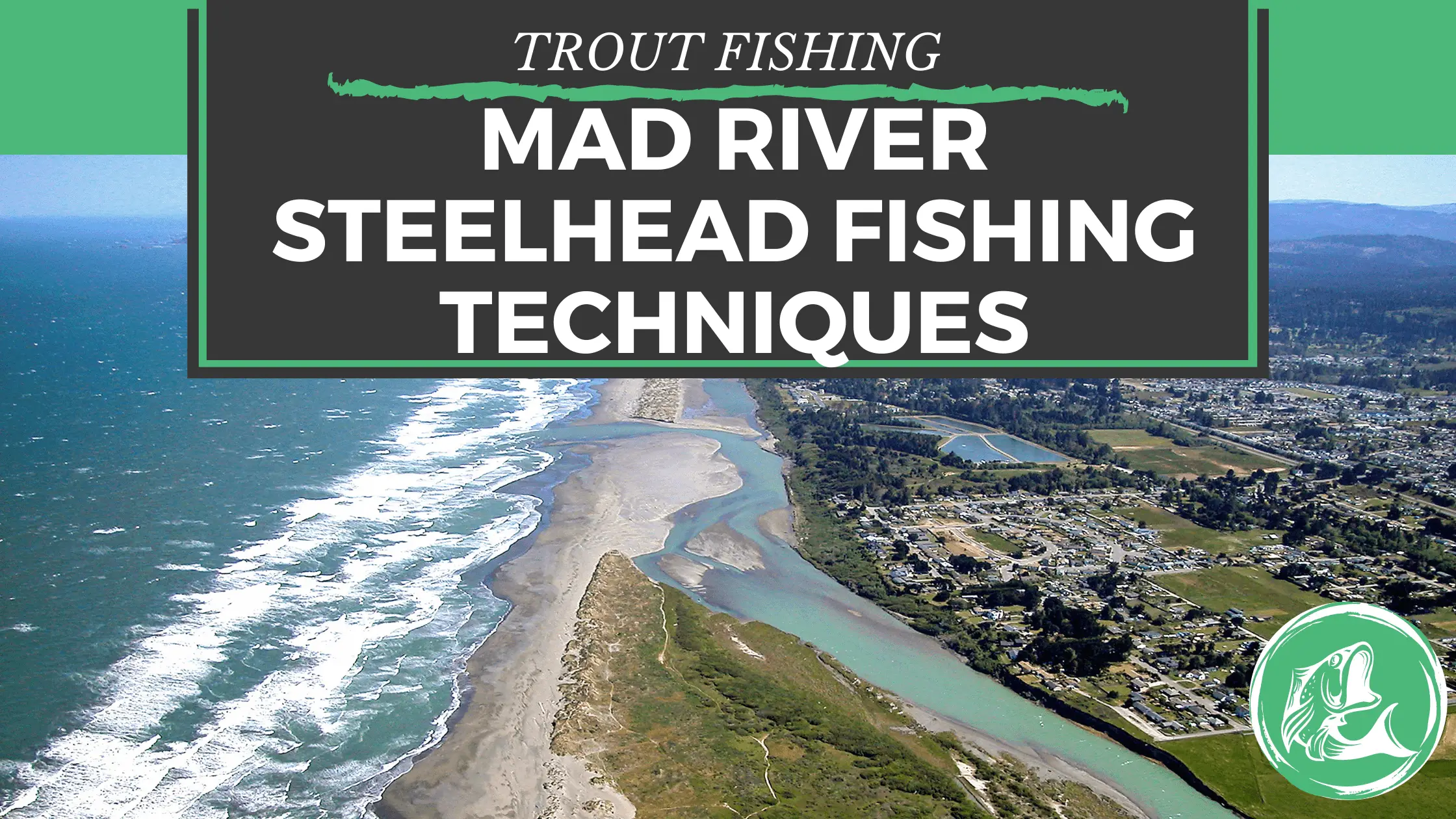Mad River Steelhead Fishing Techniques

In California, steelhead anglers frequently neglect the Mad River. Perhaps because of its more well-known neighbors like Smith and Klamath Rivers. Despite that, the Mad River has historically housed some of the most outstanding steelheads runs on the coast of California, but by the mid-twentieth century, those fish were nearly extinct.
The hatchery is the primary reason the Mad is so exceptional. Dams, industrialization, and logging have long-term consequences on wild runs. By the mid-twentieth century, the river’s steelhead run had all but vanished.
Though there are many miles of outstanding steelhead water on the Mad River, the greatest fishing is usually found in the small river between the hatchery and the Blue Lake Bridge. This area is the hub of the activity, with the highest numbers of steelies – and steelhead anglers.
This article will discuss fishing techniques to guide you for a successful steelhead angling on the Mad River. Furthermore, we will go through the best baits and lures for a sure hit. Please take time to read!
Fishing Techniques to Consider
Steelhead catching techniques on the Mad River are often simple. While some anglers use drift boats to navigate the river, bank fishing is more popular. For the most part, the river is narrow enough that casting into deep water from shore is not difficult.
Alongside, drifting bait is responsible for more fish than any other method. Use salmon roe and just enough weight to keep your bait on the bottom, however not anchored. Cast across its river and allow the bait to bump and bounce down long fishy-looking holes and riffles.
Some anglers also use spinners and spoons. In general, they don’t catch as many fish, but artificial lures can entice some of the river’s largest bites. Mepps and Blue Fox spinners, as well as Little Cleo spoons, are highly regarded.
When to Catch Steelhead on Mad River?
Steelhead began to stream the Mad River as early as August, but a limited number of fall-run fish entered all through the months that followed. Although the action isn’t always consistent in the fall, it’s an excellent time to avoid the crowds.
The majority of steelhead spawns in the Mad River are winter-run fish, with the best months being December and January. Fishing might be good in February as well.
Some will stay until March, when there is also a small run of younger steelhead weighing 3 to 5 pounds, known as bluebacks by some local anglers.
Anglers frequently ask me about the baits, lures, and other gear that I recommend, as well as the best way to fish for steelhead on the Mad River. That’s why we’ve compiled all of the information you’ll need in this article to become a great steelhead angler. So, keep reading down below!
How do you catch steelhead on the Mad River?
You can catch steelhead using one of three basic fly-fishing tactics. The Cast-and-Retrieve Technique, Steelhead Greased-line Presentation, and the Wet-Fly Swing are all options. You will catch your winning steelhead if you use these approaches, which you should do depending on the water.
Cast and Retrieve Method
Major early steelhead and fall salmon must use the cast-and-retrieve method in the calm waters of rivers and lower tidewater pools. This strategy is often regarded as the most effective way to capture steelhead in California.
Steelhead Greased-line Presentation
A greased-line presentation is created for steelhead when water temperatures are above 45 degrees in late autumn and early winter. Use this floating-line method on classic steelhead runs. If the water temperature is less than 45 degrees, you should utilize sinking lines.
Swing with the use of a wet fly
While on chilly winter days when the water temperature is below 45 degrees, and the steelhead is slow, try this variant of the classic greased-line presentation. The wet-fly swing delivers the fly slowly and deeply with a tight sinking-tip line.

What’s the best way to fish for steelhead on the Mad river?
The Mad River is primarily known for its bank fishing, although it is also accessible by drift boat. Every year, many hatchery fish are caught in this river.
Due to significant logging in the area, the Mad flows muddy much of the winter; thus, most anglers often use 8-weight or larger rods to swing massive black, orange, or chartreuse flies on slightly elevated or lead-core sinking lines.
Nonetheless, use a wet-fly swing with extra mends to get the flies in front of the steelhead holding to the bottom.
What is the best bait for steelhead on the Mad river?
Steelhead roe, worms, beads, and flies are the greatest steelhead baits for river fishing. Using the best steelhead bait will significantly enhance the number of fish you capture. However, which steelhead bait to use will depend on water quality and flow, the time of year, and the activity levels of the fish.
Spawn/Roe
Although this is the most commonly used steelhead bait, it is not always the greatest bait. Roe can also be referred to as roe bags, spawn sacks, spawn pouches, or egg sacks. Whatever you want to name it, roe is simply fish eggs bound in a specific net.
Worms
Plastic and real worms can outperform roe under the right conditions. Mostly, it is used by beginners and those who prefer to have an easily accessible bait; because there are many worms available in online shops.
Beads
A little bead that resembles a salmon or steelhead egg is sometimes exactly what the steelhead is looking for and can be the ideal steelhead bait.
Flies
Some flies perform well for steelhead and can even be the finest steelhead bait at times. My secret weapon is flying when the rivers are clogged with roe baggers, and flies like a black or brown stonefly can be my finest steelhead bait these days.
Remember that young steelheads eat flies regularly to grow. Adult steelhead regard those same flies as a valuable food source when they’re in the rivers, particularly after the salmon hatches. There aren’t enough eggs for them to ingest.
I can’t pick one steelhead bait and declare, “That’s the best steelhead bait,” because various factors influence which bait seems to be the ideal on any specific day, under different conditions, or at different times of the year.
Tip: One of my guiding suggestions for my clients is to observe what other anglers are using and if they are having excellent success, use that as well, but if they’re not, don’t use what they are using and start rotating through all your baits until you find something the fish might prefer.
What are the best lures to catch steelhead on the Mad river?
In terms of lure, the No. 3 and 4 Mepps, Blue Fox, and Pen Tac spinners, as well as 2/5-ounce Little Cleo spoons in silver, gold, or copper, catch a lot of fish.
The goal is to cast across and slightly downstream, allowing the lure to settle to the bottom. When it’s close to the rocks, engage the reel with just enough line pressure to keep the spinner’s blade whirling at low revolutions per minute or the spoon wobbling slowly.
In addition, track the lure’s movement as it drifts throughout the run with your rod tip, then let it swing in an arc downwards until it’s exactly downstream of your place.
Best techniques for bank fishing for steelhead on the Mad river?
Anglers can use several approaches when casting for steelhead, but there are three essentials to capturing a steelhead regardless of the type of gear used:
- Spend some time out on the sea. If you learn a river and perfect your technique, you will catch more fish than if you chase after every “hot lead.”
- Cover water effectively. Keep your lure or bait towards the bottom of a stream or pool and fish it systematically.
- Keep a positive attitude. Have faith in the water you’re angling in and the lure or bait you’re employing.
Here are some techniques you could use for bank fishing in the Mad River:
Jig/bait and Bobber
This technique is an excellent strategy for both bank and novice steelhead anglers. A loaded jig or bait is tethered to a float bobber and floats with the water. Set the hooks when the bobber dives, stops, or wobbles!
Spinners
Many anglers know the cast and retrieve strategy, but those who learn the cast and swing presentations better catch steelhead. This entails casting the flier slightly upstream, drifting naturally in the water, and then “swinging” toward the bank.
Fly-fishing
A difficult yet rewarding strategy for catching steelhead. Anglers swing flies through the river with single or double-handed rods or drift a nymph towards the bottom with a nymph/indicator rig.
Drift fishing
Substantial weight is used to bounce the bait or lure along the bottom. The idea is to maintain the bait close to the water’s bottom and move at the same speed as the current.
This method is tough to master since it requires a natural presentation and detecting subtle steelhead takes. However, it is one of the most extensively utilized steelhead fishing strategies because of its efficacy.
Best techniques for boat fishing for steelhead on the Mad river?
The first time you go out to fish for steelhead on the Mad river, you will be amazed at how well you will be. With the aid of the best techniques for boat fishing, you will catch and release steelhead in no time.
Pulling plugs
It is also known as hot-shotting or back trolling. A plug is a plastic bait that dives and wiggles in the current. Plugs can be cast from the bank and slowly swung in the current instead of being towed behind a boat where they can shift and squirm in the water as the boat flows downstream.
Plunking
In this technique, a heavyweight keeps bait or a spinner-type bobber steady in a river’s stream near the bottom. This is an excellent strategy when high water levels and steelhead are holding or migrating in soft waters near the shore. Also, a good choice for beginners or anglers with limited movement.
As our previous articles have demonstrated, side drifting is a simple learning technique. In a way, our guides are fishing. So what would I imply by this? We have our clients cast out, slightly above, with just enough weight to hit the bottoms. The bait will drift at its usual speed, controlled by the fishing guide. You can expect to make many casts, drifts, and retrieval when side drifting in our boats.
Plan Your Steelhead Fishing on Mad River!
The colder months are ideal for steelhead fishing on the Mad River, but you can also go in the late fall or spring season to avoid crowds and enjoy milder weather.
In any case, it’s wise to be prepared for various water conditions. There is still some logging in the Mad River’s middle portion, and winter flows are typically damp.
Fishing seasons and other regulations vary throughout portions of the Mad River. They do in many California rivers where salmon and steelhead spawn and could be subjected to unexpected regulation changes.
On top of that, along with our lures and bait tips, before you travel, make sure you are familiar with the California fishing restrictions. Also, to catch steelhead in the Mad River, you must have a current California freshwater fishing license and a North Coast Salmon Report Card or Steelhead Report Card.


